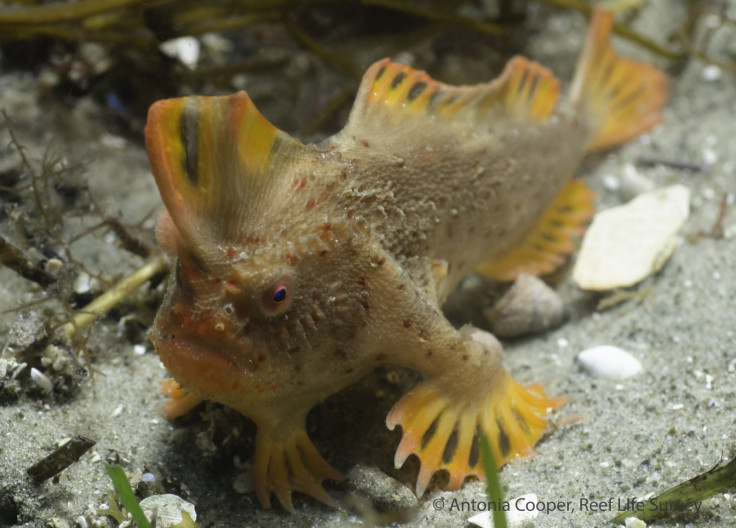Red Handfish: Critically endangered family of the tiny crawling fish gets new members
Researchers in Australia believe more populations like the one found could be existing in different habitats.
Divers in Australia have discovered a new population of red handfish, an incredibly rare marine creature previously considered endemic to the waters off the coast of Tasmania, Australia. The finding doubles the total count of the fish and suggests more populations like this could be thriving out there.
Until last week, only 20 to 40 red handfish were known to be living on the planet. The creature, first discovered in the 1800s, measures a few inches long, crawls slowly along the seabed and draws attention with its unique fins that look like hands.
The new population of the fish was found thriving a few kilometers away from Frederick Henry Bay in the southeast of Tasmania - the location they were known to exist.
When a person reported the sighting of a rare fish near a reef, Antonia Cooper and her team from the Institute of Marine and Antarctic Studies turned up to look for it. They spent hours in search of the rare creature and were just about to leave when Antonia fiddled with a stray piece of Algae and spotted the rare red handfish, National Geographic reported.
This helped them narrow down their search zone to the size of a badminton court and find eight similar fish. The group estimates nearly 20 to 40 creatures live at the new site.
"Finding this second population is a huge relief as it effectively doubles how many we think are left on the planet," scientist Rick Stuart-Smith said in a statement. It is easily one of the rarest fish, he added in a video posted by the institute.
As the habitat of the new population is different from the original group, the researchers believe that the creature might not be as habitat dependent as previously thought and could be existing in other regions too.

Discovering "a new population that is definitely distinct from the existing one is very exciting," Cooper said while highlighting the importance of the discovery. "It means there's potentially a bigger gene pool and also that there are potentially other populations out there that we're yet to find, so it's very exciting indeed."
As National Geographic reports, red handfish is critically endangered because of its poor reproductive rate and incapability to swim swiftly to disperse in water as other marine creatures. Among other things, poaching also effects their numbers, with many eggs being jostled by swimmers and boats.





















